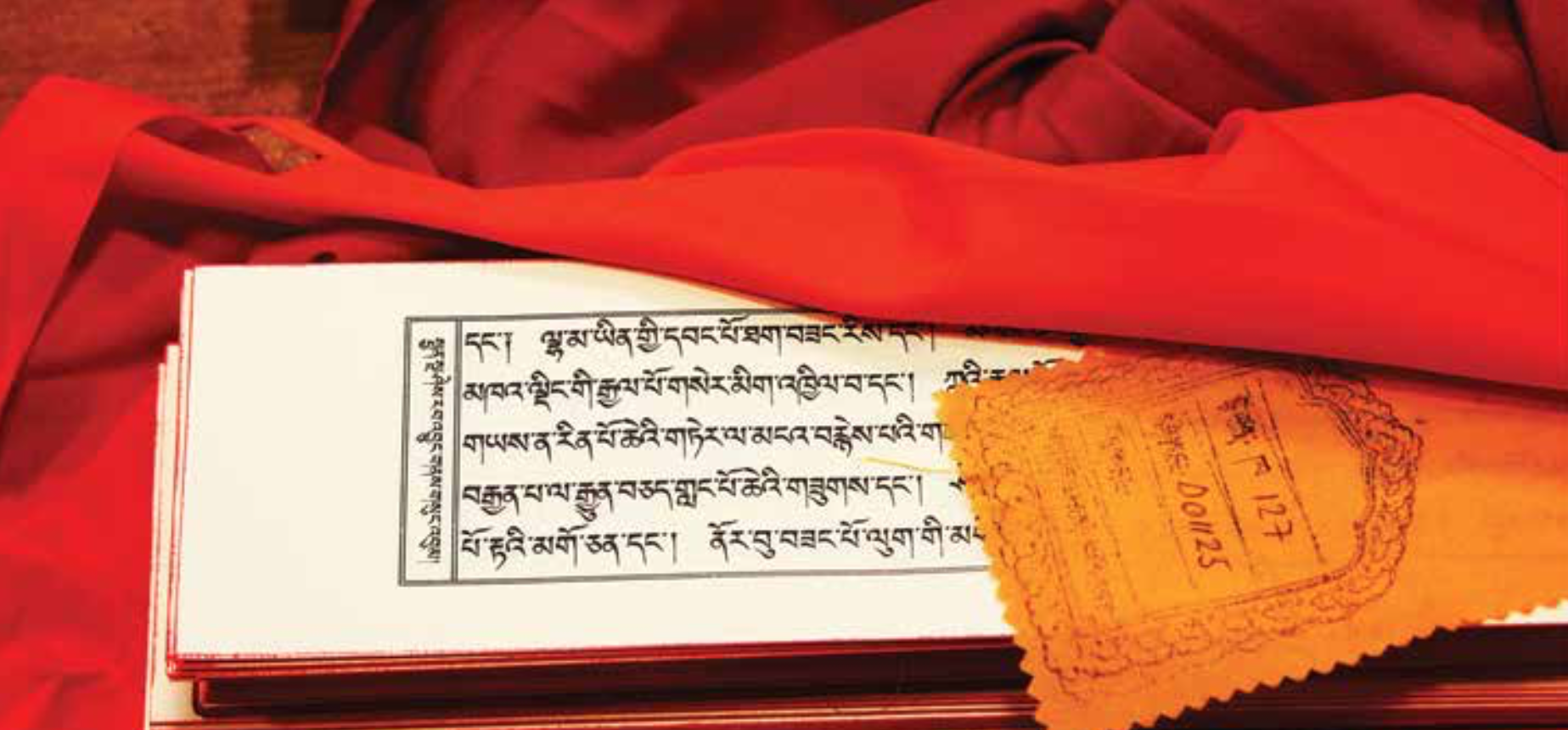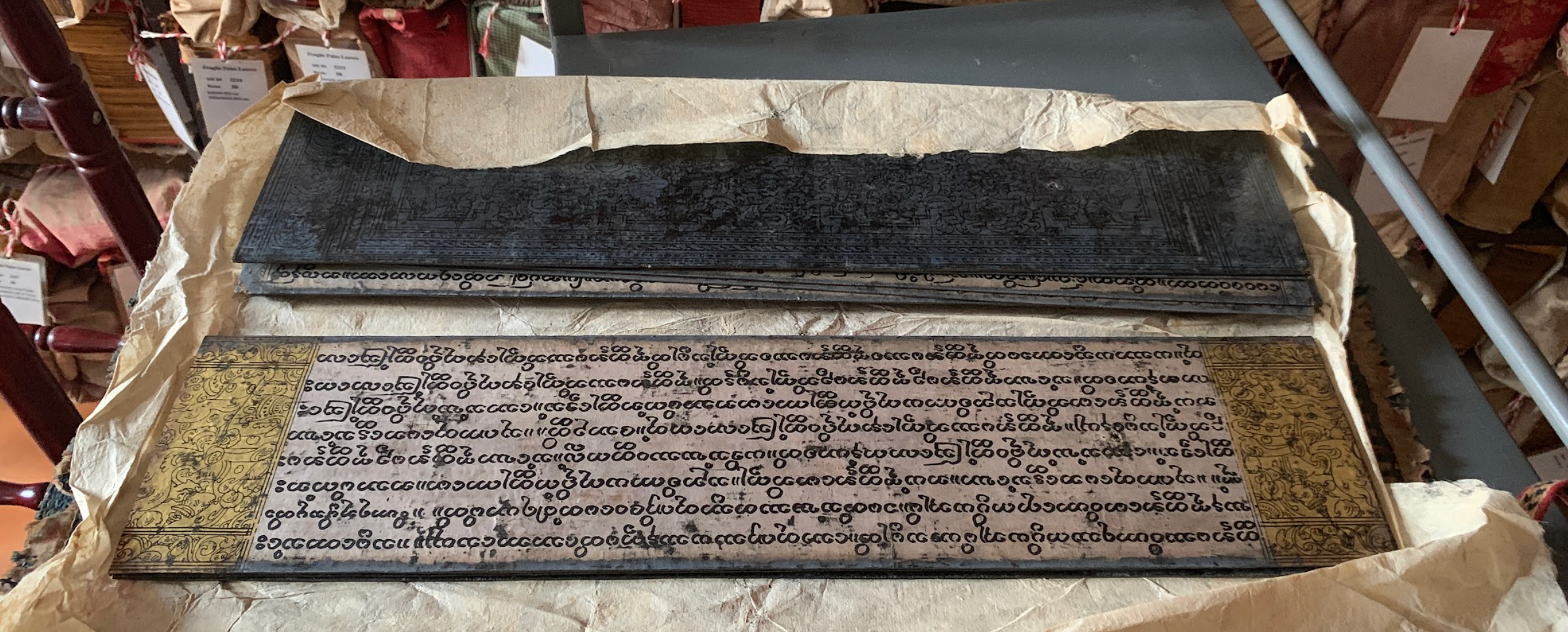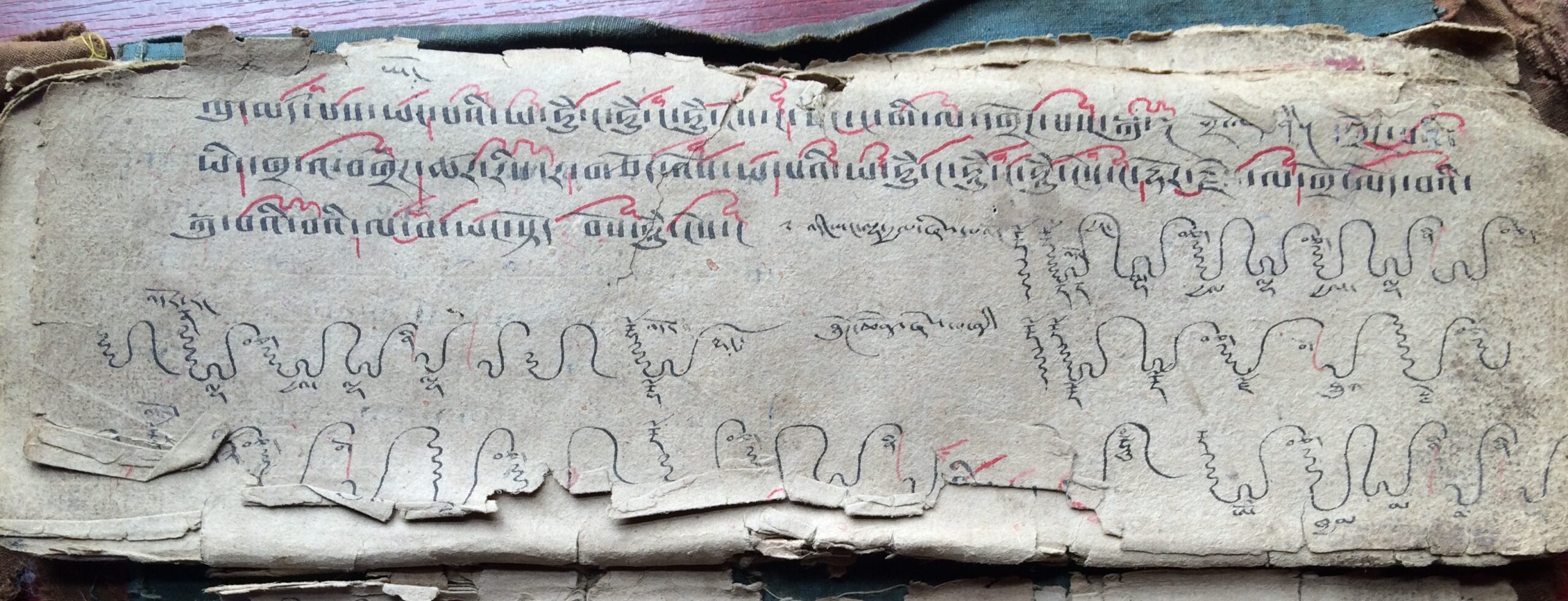With the arrival of the winter holiday season, we know that you will be browsing titles on Netflix and Amazon Prime for entertainment and edification. And we have a Buddhist alternative that you might wish to explore!
Our library platform, the Buddhist Digital Archives, is a vast ocean of Dharma texts. The size of the archive can be overwhelming sometimes for the ordinary user. So might we suggest browsing a selection of our collections on BUDA? The collections are groups of texts that are part of the same preservation project, the same library, or come from a single BDRC institutional partner.
Our library of Tibetan texts comprises several collections. As the largest online archive of Tibetan Buddhist materials in the world, our library is an inexhaustible treasure-house of Dharma, containing 20 editions of the Kangyur, 6 editions of the Tengyur, the complete collection (sungbum) of over 600 Tibetan masters, and over 27,000 blockprint volumes and 27,000 modern publications.

Image of Tibetan text at a monastery in India, courtesy of Dafna Yachin and Digital Dharma.
We also want to highlight two very important collections that emphasize the multi-lingual and multi-traditional nature of the Buddhist Digital Resource Center: the Khmer Manuscript Heritage Collection, which contains 11,596 manuscripts, and the Fragile Palm Leaves Collection, which contains over 5,000 volumes of an incomparable collection of delicate palm-leaf manuscripts.
No wonder the Buddhist Digital Resource Center is the largest open access digital library of Buddhist texts worldwide! Just in 2021, more than 90,000 users from over twenty five countries accessed over 5 million pages of Buddhist literature on our site.
As we spotlight our rich and diverse collections, we also want to thank our partners and supporters. Our work digitizing and disseminating Buddhist literature around the world would not be possible without them.
Reminder: These collections can be further navigated with our search filters or facets, found on the left hand side of our search results page. These facets will allow you to refine your search based on a number of parameters including: Genre, Topic, Script, Author, Print Method, etc.
Select BDRC Collections
The legendary PL480 series of Tibetan texts, which became the building blocks of Tibetan Studies in the US, is one of Gene's greatest legacies. Public Law 480 was a program in which the US government provided agricultural assistance to countries around the world. For many decades the Library of Congress spent India's PL480 funds to acquire Tibetan books published in India. This program to acquire Tibetan texts had begun in 1961, but Gene's brilliant solution was to engineer the printing of ancient Tibetan texts using photomechanical means so that they could be made into new publications eligible for purchase, thus reprinting and preserving thousands of endangered Tibetan texts.
Gene contributed mightily towards the preservation of Tibetan culture through collaborating with lamas to reproduce and publish these Tibetan books from all schools of Tibetan Buddhism and all fields of Tibetan arts and sciences. The new introductions and prefaces that Gene wrote for some of these ancient texts were a crucial part of the strategy to gain clearance from the Library of Congress to purchase the books for American libraries. The LOC sent copies of these Tibetan books to major research libraries in the United States for decades and they served as primary materials for two generations of Tibetologists, until the founding of TBRC/BDRC. PL480 was used to purchase Tibetan texts from 1962 to 1985 and an estimated 6,000 Tibetan volumes were published and acquired through this program.
National Library of Mongolia Collection
The National Library of Mongolia, founded in 1921 as The Institute of Sutras and Scripts, is Mongolia's oldest and largest library, and is entrusted with the mandate to preserve Mongolian national written heritage. As Tibetan was a liturgical language of Mongolia, the Library's largest holdings are its Tibetan Manuscript Collections. Coming from the private collection of the last Khan as well as from members of the public who had saved these sacred texts from the Communist purges, the Library's Tibetan Collections of over 31,000 texts contain many rare and precious works of cultural heritage.
This project is being carried out in collaboration with the Asian Legacy Library, formerly Asian Classics Input Project. To date over 3,500 volumes have been released online.

An astrology text translated into Tibetan from Mongolian, blockprinted from Peking printery, from the National Library of Mongolia. BDRC RID: W1NLM2752.
Khmer Manuscript Heritage Project Collection
Sponsored by A Khmer Buddhist Foundation, this collection includes more than 1.4 million images of manuscripts from Cambodia. 6,170 manuscripts were digitized directly in the field and 5,426 manuscripts were digitized from film copies made by the École française d'Extrême-Orient and the Fonds pour l'Édition des Manuscrits du Cambodge between 1990 and 2004. The manuscripts in the Khmer Manuscript Heritage Project collection were digitized between 2019 and 2021 by BDRC, in collaboration with Digital Divide Data, The Brechin Group Inc., the École française d'Extrême-Orient, and the Fonds pour l'Édition des Manuscrits du Cambodge.
Fragile Palm Leaves Collection
Beginning in 2016, with the support of Khyentse Foundation, BDRC began digitizing and archiving Peter Skilling's incomparable collection of Southeast Asian Buddhist manuscripts held by the Fragile Palm Leaves Foundation in Nonthaburi, Thailand. The Fragile Palm Leaves collection consists primarily of palm leaf texts in Pali as well as other Southeast Asian languages, including Burmese, Shan, Tai Khun, Tai Lue, and Mon.
BDRC is digitizing FPL's 10,896 bundles of Burmese-style palm-leaf manuscripts and 5,660 are already accessible online. The majority of the Burmese texts in the FPL collection date from the 18th or 19th century, and cover a variety of genres and topics, including: canonical works, commentaries, law, poetry, stories of the Buddha, grammar, and religious rituals. Manuscripts such as these are the primary sources for the study of Burmese and Theravāda Buddhism, Pali philology, history, literature and more.

Image of Burmese text at the Fragile Palm Leaves Foundation in Thailand.
This is a collection of texts from the library of the Nechu Lhakhang of Drepung Monastery, the Temple of the Sixteen Arhats. The texts therein had been rounded up from monastic libraries in south and central Tibet by Gushri Khan's Koshot army in the 17th century, and cached, in secret, at the Nechu Lhakhang (Temple of 16 Arhats).
In 2004, The Drepung Catalogue, an inventory of some 24,000 texts from the Nechu Lhakhang, was published by Paltsek Tibetan Rare Texts Research Centre. The temple's original collection actually held over 40,000 texts, but they were since dispersed. The Drepung Catalogue mentions three libraries, among others, as source libraries for the Ngechu Lhakhang texts: Nedong Palace of the Pakmodru, Samdrubtse Palace of the Tsangpa and Tse Lhakhang of the Karma Kagyu. Cécile Ducher noted that "the editors of the Drepung Catalogue liken the importance of this [Nechu Lhakhang] discovery for the history of pre–17th century Tibet to that of the Dunhuang library-cave for pre–11th century Central Asia."
This collection comes from the personal library of the Chandra family. Dr. Lokesh Chandra and his father Dr. Raghu Vira Chandra, trailblazers in the field of Buddhist Studies, were also prolific editors and writers. Among their enduring contributions to Buddhist Studies is the Śata-piṭaka Series, a vehicle for the publication of countless volumes of Buddhist classics in Sanskrit, Tibetan, and Mongolian. In 1955 Dr. Raghu Vira Chandra travelled to China to conduct research and collect texts and images. Raghu Vira returned from his extensive travels in China with 300 crates of Buddhist texts in many Asian languages including Tibetan, Mongolian, Tangut, Chinese, and others. Lokesh Chandra (b.1927) inherited his father's collection and published much of it, while also collecting even more Tibetan, Chinese, and Sanskrit Buddhist texts. A highlight of the Lokesh Chandra Collection is a miscellany of 144 volumes of Tibetan texts available only on BDRC.

Image of damaged Tibetan text from the field in Tibetan areas of PRC.
Library of Tibetan Works and Archives Collection
The Library of Tibetan Works and Archives founded in 1970 in Dharamsala, India, is one of the most important institutes in the Tibetan cultural world. In 2007/8 Gene Smith met with Director Geshe Lhakdor to initiate a mutual data-sharing partnership between our two libraries. The LTWA Collection in our library comprises the texts from their library and archives, with the latter containing many rare and valuable texts.
Central Institute of Higher Tibetan Studies Collection
The Central Institute of Higher Tibetan Studies was established in Sarnath, India, in 1967 and a key part of its mission is to support the work of Indian and Tibetan scholars to translate Indic Buddhist classics from Tibetan back into Sanskrit, their language of origin. CIHTS is also the chief non-monastic center of learning in India for the traditional Tibetan arts and sciences. In 2019, BDRC formalized a partnership with CIHTS in which we agreed to share all digital texts between our two libraries. The texts in the collection shared with BDRC were scanned in Himalayan monasteries and temples by a team from CIHTS as part of India's National Mission for Manuscripts. The CIHTS team had unprecedented access to old and rare manuscripts and the quality of the scans are uniformly excellent. The study of the early scriptural collections in Tibetan translation, including proto-canonical compendia, is greatly advanced by this collection.





Sorry, the comment form is closed at this time.